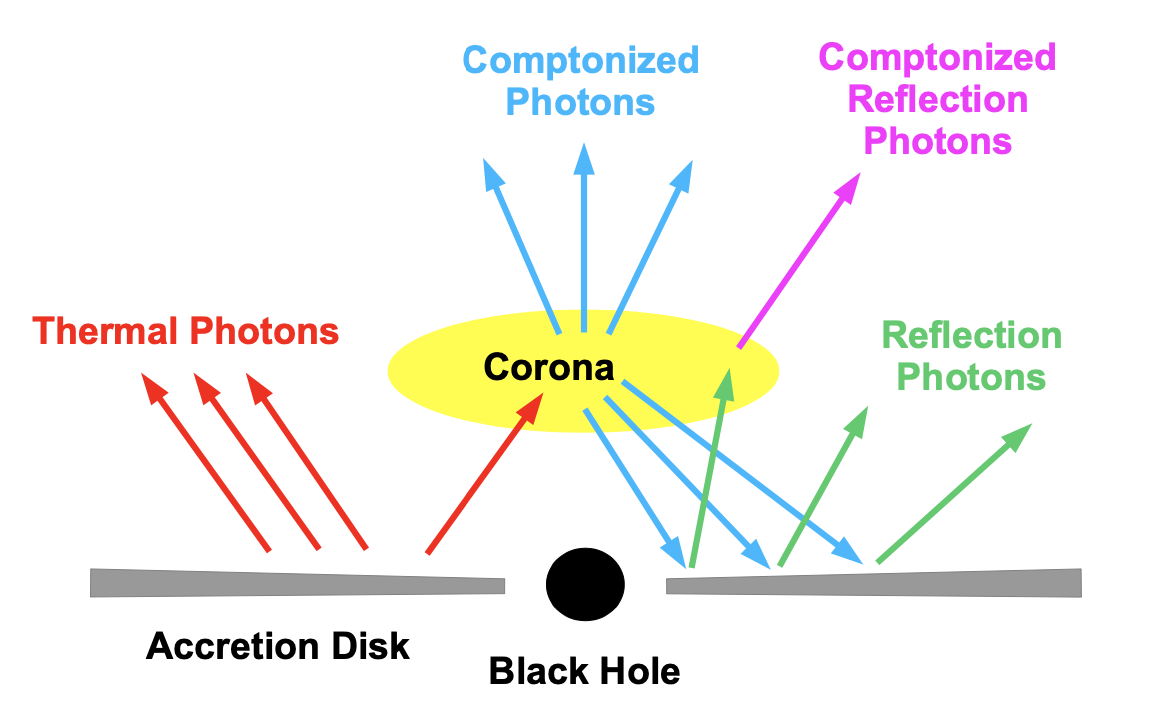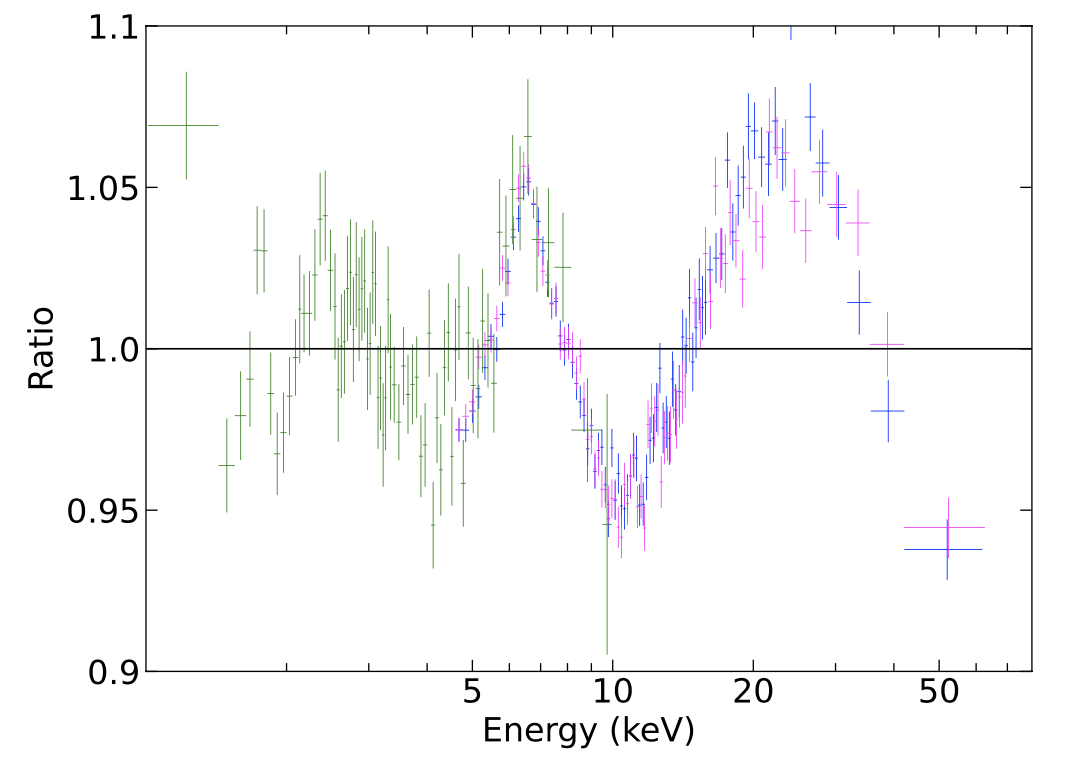NICER / ISS Science Nugget
for September 19, 2024
Black-hole X-rays get a boost
An intricate interplay of light and particles governs what we see when we observe black holes in X-rays. To determine accurately the properties of a black hole, such as its mass and spin, we must first understand the origins of the emitted light and how it is modified by the extreme environment - strong gravity, clouds of energetic particles, and swirling flows of hot, ionized gas - before it reaches us. Sophisticated models of these interactions are continuously developed and refined, informed by ever-improving observational capabilities. Even with just two basic elements to these models, a surprising complexity of physical processes emerges from the data. Low-energy X-rays, consistent with thermal emission and with little to no variability, arise from a disk of gas that slowly approaches the black hole, heated by turbulence and increasing orbital speeds as the matter falls into the deep gravitational well. High-energy X-rays, by contrast, emerge primarily from a cloud of particles known as the corona - the shape and location of which remains poorly understood - likely superheated by magnetic fields in the near vicinity of the black hole but vertically offset from the disk.
We see direct emission from both disk and corona, but their interactions are important. Thermal disk photons that intersect the corona can be boosted to higher energies through interactions with energetic electrons, known as Compton scattering. Some of these Comptonized photons illuminate the disk, causing atoms there - most notably iron - to fluoresce and produce characteristic line emission around 7 keV photon energy; in casual terms, this is known as "reflection" emission, a nearly ubiquitous feature in X-ray binary spectroscopy. Importantly, the fluorescence lines arising from the innermost parts of the disk can be broadened by Doppler shifts and strong-gravity effects. Finally, some of the reflected photons can return to the corona and be boosted again to higher energies. This last step is a new element in spectral modeling, with its latest application in a peer-reviewed paper recently published by S. Li (Fudan Univ., China) and collaborators in the journal Physical Review D.
The known black-hole binary system EXO 1846-031 went into outburst, after two decades of quiescence, in the summer of 2019. NICER and NASA's NuSTAR telescope observations on August 3, 2019, showed strong reflection in a part of the spectrum with overlapping NICER and NuSTAR coverage, an opportunity to gauge the importance of Compton up-scattering of photons reflected by the disk. Li et al. determine that some 10% of the reflected emission is boosted to high energies by interactions in the corona, but that inclusion of this effect does not, in this case, dramatically affect the inferred black-hole properties; they suggest that this boosted fraction may be a time-dependent quantity, potentially evolving as the system's accretion state induces changes to the corona shape, location, and/or density. Finally, Li et al. show that the inclusion of NICER data at low X-ray energies, while leaving the basic black-hole parameters unchanged, results in more-realistic and self-consistent physical parameters for the accretion flow, such as its luminosity and the distance between the accretion disk's inner edge and the black-hole's event horizon.


Left: Sketch of an accreting black-hole, with the accretion disk viewed edge-on and the mysterious corona of energetic particles shown floating above the disk's plane. The paths of X-ray photons are indicated by arrows, originating with thermal emission from the heated disk (red). Some of these photons interact with the particles of the corona, gaining energy (becoming "Comptonized") and are re-emitted (blue), either escaping or returning to the disk where they are "reflected" (green). Some of these reflected photons, in turn, may interact again with the corona, gaining additional energy before escaping (pink) to be detected by our telescopes. (Credit: Li et al. 2024)
Right: X-ray spectrum of the black hole EXO 1846-031 as measured by NICER (green points) and NASA's NuSTAR telescope at higher photon energies (its two independent detectors represented by blue and pink points). The broadband spectral behavior spanning all energies on the horizontal axis, anchored by NICER's low-energy coverage, has been subtracted to highlight two humps: above 10 keV, NuSTAR detects the Comptonized emission, while both telescopes probe the reflected emission in the 5-10 keV range. (Credit: Li et al. 2024)
<< Previous
Main Index
Next >>